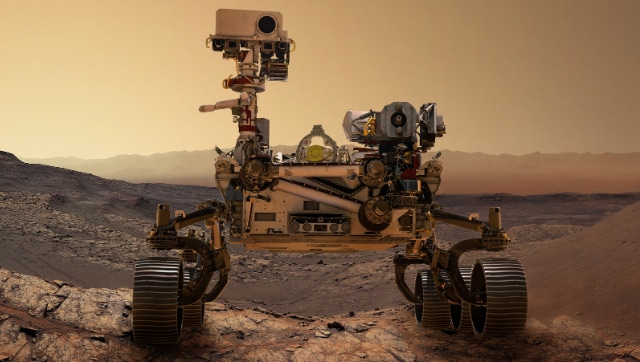Martian River: NASA's Perseverance rover finds evidence of a once wild, raging river on Mars
NASA's Perseverance rover has found a riverbed on Mars. The coarse dirt and debris that the rover found, indicates that the river that once flowed through the Jezero Crater, was a massive one with very powerful and wild currents.

NASA's Perseverance rover has found a riverbed on Mars. The coarse dirt and debris that the rover found, indicates that the river that once flowed through the Jezero Crater, was a massive one with very powerful and wild currents.
The search for ancient life on Mars has advanced significantly, and humanity may soon discover a foreign and unknown life form soon. One of the key rovers used by NASA to search for life, the Perseverance Rover, has found many signs of water and ice on the Martian surface.
Now, it seems that NASA’s Perseverance rover has found a portion of Mars where once one would find a raging and wild river, a potential riverbed.
Just last month, NASA’s Curiosity rover shared images of what appeared to be a supposed rock formation, that looked like the skeletal remains of a large animal.
New photos from NASA’s Perseverance rover may reveal evidence of what was once a river that was deeper and running more quickly than researchers had previously seen evidence for.
The discovery of a river on Mars marks a significant advancement in the search for signs of ancient life on the planet. The Perseverance rover has been actively investigating Jezero Crater and its surroundings for over two years.
Question: When you see something like this, do you say, “Huh, a pile of rocks.” – or something more like, “Whoa! Crazy tall, tilted, sedimentary layers! Formed by a fast-moving ancient river, maybe?”
(I think you know where I stand.)
Latest findings: https://t.co/vU8O1gpLmP pic.twitter.com/zZjmWimVge
— NASA’s Perseverance Mars Rover (@NASAPersevere) May 11, 2023
This river, scientists at NASA say, was part of a network of streams that flowed into the region, offering potential clues about past wet habitats that could have supported microbial life.
Also read: Want to live on Mars? Here’s what it will feel like
NASA’s press release suggests that a higher water flow would have facilitated the effortless transportation of larger chunks of material. The presence of cobbles and coarse sediment grains in the photographs indicates the existence of an exceptionally energetic river that transported a substantial amount of debris.
Recently, Perseverance has turned its attention to exploring the river delta extending on the western side of Jezero Crater. During these investigations, scientists have uncovered rock formations that provide indications of the delta’s history as a watery environment.
Read all the Latest News, Trending News, Cricket News, Bollywood News,
India News and Entertainment News here. Follow us on Facebook, Twitter and Instagram.
